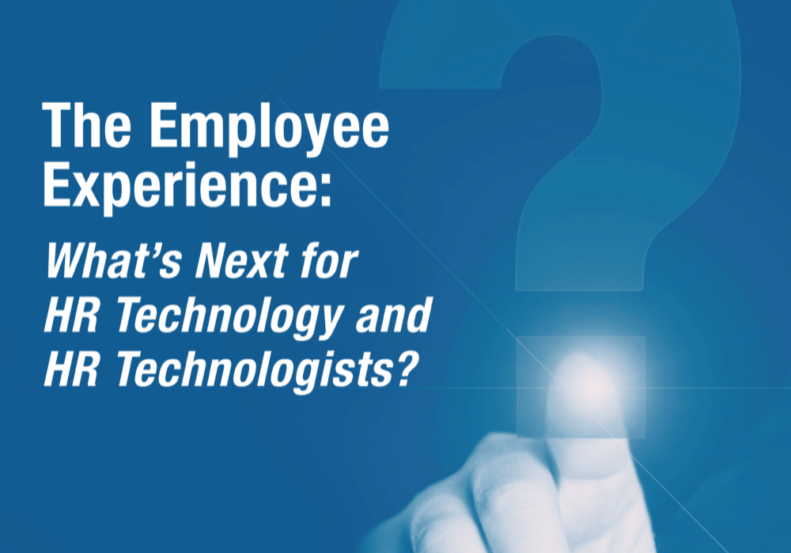Technology is amazing. There is more we can do now than we could ever imagine, even just a few years ago. But… just because it can do more, doesn’t mean there’s more value.
“This new service gives me access to every football game in every city, live and on demand. I won’t miss a play.”
“Wow, that’s fantastic. But I thought you only watched the Cowboys and you already get those games on network tv.”
“Yes, but now if I wanted to, I could watch them all.”
“Okay…”
Unfortunately, it can be so easy to get distracted by all the dazzling new features and mind-blowing possibilities that we end up shelling out tons of money for an amazing thing we don’t actually need or want. And marketing doesn’t help, flinging claim after claim, image after image, painting a compelling picture that can leave you giddy with desire.
“Check out my new car! It parallel parks by itself.”
“Cool. But when do you ever parallel park?”
“I don’t, but if I ever need to, now my car will do it for me.”
“Okay…”
But that expensive self-parking car or all-encompassing sports coverage is only as valuable as how you use it. And that goes for that shiny new HRIS or ATS or other HR technology.
The truth about technology – it’s value is not the ‘what’, it’s the ‘why’. Why do you need it? How will you use it to solve a problem, or improve a situation, or enable something new?
So, how do you find and evaluate the right technologies for you? Those systems and solutions that go beyond the shiny façade to add value, ease burdens, and solve problems?
Start with What Matters – The ‘Why’
What generally happens when you go into a supermarket without an idea of what you need?
If you’re anything like me, you leave with a lot of tasty treats but nothing that makes a dinner, let alone the multiple breakfasts, lunches and dinners necessary before the next supermarket run.
Fortunately, this problem is easily avoided. Spend a few minutes considering what you need and create a shopping list first. Then, go to the supermarket. It doesn’t mean there won’t be changes or impulse buys (such as my odd habit for getting avocados and figuring out what to do with them later), but by starting with the ‘why’ of ‘must have meals’, the basic needs are met.
With HR technology, the premise is the same.
Before shopping for any HR technology, start with the why and flesh out the what you need to meet that why (i.e. the shopping list).
Effective ‘why’ reasons are:
- Compelling: the organization needs/wants to address it.
- Measurable: you can evaluate if a technology can resolve it and then verify if it has.
- Supported: the organization has dedicated resources (time & funding) to address it.
For example:
Why: “I need a new solution because I hate my current solution”
Effective: NO
- Not compelling – likely beyond those using the system, the organization doesn’t care that you don’t like it.
- Not measurable – ‘won’t hate it’ is not objective so it can’t be objectively measured and valued.
- Likely not supported – why would the organization pay for ‘not hating’?
Next step: dig deeper – why do you hate the current solution? What about it doesn’t work, causes problems, wastes time/money, etc.
For example:
Why: “I need a new ATS that offers a variety of integrated and/or embedded screening tools because our current solution doesn’t offer or integrate with assessments, background check, and other steps that we use – resulting in a lot of manual steps, double entry, and frequent errors.”
Effective: YES
- Compelling – saving time, money, and avoiding risk of errors can be valuable to the organization.
- Measurable – you can verify that a technology offers the tools that you need and it’s possible to verify that the tool is saving time and reducing errors.
- Supported – with a clear problem and potential return on investment, you can garner support.
There can be, and often is, more than one ‘why’ driving needs. The more you can define, the better and more complete your requirements will be (see next section). Here are a few tips to identifying ‘why’s:
- Consider both present and future. Don’t limit the ‘why’s to what the team and/or organization needs today. What may it need tomorrow and beyond?
- Focus on what IS possible not what WAS possible. Often older solutions, or lack thereof, are a result of limitations that may no longer exist. Rather than optimizing existing processes, consider if there are new and better solutions to achieve the goals.
For example, don’t look for a better filing cabinet lock to secure candidate information, rather, look for a secure ATS. - Identify who’s impacted. Clearly knowing who’s compelled to resolve the ‘why’ will help with gaining support. Even better, use multiple ‘why’s impacting multiple departments or objectives to gain more support.
For example, is it solving an organization issue or supporting an organization objective? Is it a department challenge, an IT requirement, etc.?
Though to meet multiple ‘whys’ from multiple places, the shopping list can easily become too long.
And this leads to the second step:
Prioritize
When it comes to technology/solutions, there are often multiple ‘why’s feeding multiple needs, and that’s fantastic (more reasons to drive a compelling argument and gain support). However, not all needs are equal. With multiple ‘why’s, prioritize.
Why prioritize?
Unless you have unlimited budget of funding, resources, and time, chances are good that there won’t be a solution within the budget that meets every ‘why’-driven need, at least, not right away. Prioritizing the needs before beginning the search for the next tech will help keep you focused on what matters and give you the means to compare options to get the most value for the investment.
To do this:
Step 1: For each ‘why’-driven need, identify the requirements that the solution must have to address it.
For example:
Why: “I need a new ATS that offers a variety of integrated and/or embedded screening tools because our current solution doesn’t offer or integrate with assessments, background check, and other steps that we use – resulting in a lot of manual steps, double entry, and frequent errors.”
Requirements:
- Easy integration to x, y, and z technologies without customization.
- Embedded assessment and screening solutions or available integrated solutions through a marketplace that is applicable and validated for our industry and positions.
Step 2: Assign a priority to each of the requirements.
The key to this step is to differentiate the importance of each requirement. Therefore, if you must make tradeoffs to stay within budget, you know which requirements are most important. This means that everything being ‘high’ priority is not useful.
TIP: If the organization has a difficult time assigning different priorities (i.e., if everything is ‘high’), stack rank the requirements instead to force a scale.
Step 3: Get agreement among stakeholders for priorities.
Once you have the prioritized requirements, present the prioritized list to the stakeholders to get feedback and ultimate agreement on the list. Make sure to include the ‘why’ with each requirement so it’s clear why it’s there.
Stakeholders are all those who have influence over the budget (funding, resources, and time), and/or process of technology selection, adoption, rollout, training, etc. Stakeholders typically include:
- A champion: the ranking person supporting the effort.
- Decision maker(s): those who will ultimately give the go/no-go on a purchase.
- Influencers: those who impact the go/no-go such as management of impacted departments, system owners and implementers (IT, HR Operations, etc.), legal and compliance, and users.
TIP: If your stakeholders aren’t cooperating or have opposing opinions on priorities, try inviting them all to a working session so they can debate the priorities together to reach a conclusion. If you are not the champion, work with the champion to ensure the session stays on task and focused.
Once you have agreement on the prioritized list of what you want, you’re ready for the next step.
Define Budget
Just because you know what you want, that doesn’t mean you can get it. Technology, like every other project, initiative, or purchase, is a balance between desire and budget.
Therefore, before you start shopping, know your budget, or at least, have an initial budget in mind.
Budget includes:
- Funding: the money you have to spend – both operational and capital costs. For example, money for hardware purchases, software purchases, and consulting time.
- Resources: the internal resources you have for the project – both those that are on the project full time and those that are shared with other projects. Keep in mind, resources that are only part-time on a project likely have competing priorities, so their time is less focused and reliable.
- Time: the length of time before delivery – including milestones of the project, launch date, training, and adoption.
Set your budget or budget ranges for each of these buckets. Communicate the budget with your stakeholders and get buy-in/agreement.
Tip: funding, time, and resources are partially interchangeable. For example, sometimes one resource with more time may accomplish the same task as two resources or using funds for a consultant can augment resources.
Once you have your ‘why’s, prioritized requirements, and budget, you are ready to start shopping.
Comparison Shop
Have you ever seen the tables comparing features when shopping for a new phone or computer or car? It shows you what each has and how much you get for the cost so you can easily compare your options. Comparison shopping for HR tech is the same – except the table is yours (not theirs).
Use your prioritized list of requirements to create a table for comparing options. Include costs so you can compare options against your budget.
Dive into the details to understand the tradeoffs, limitations, and details behind the amazing claims, flashy websites, and glossy marketing materials. Dig until you are satisfied because the more you understand, and the cleaner you track the details against your list of requirements, the easier and more accurate the decision will be and the more you are setting your program up for success.
TIP: Take advantage of free trials and pilots. Rather than taking the vendor’s word for it, prove the technology does as claimed, and does it well for your organization and teams. Small scale tests will also help to test and develop rollout, training, and adoption plans.
How do you do this?
Great question, and a great topic for a future blog post.
Happy shopping!



